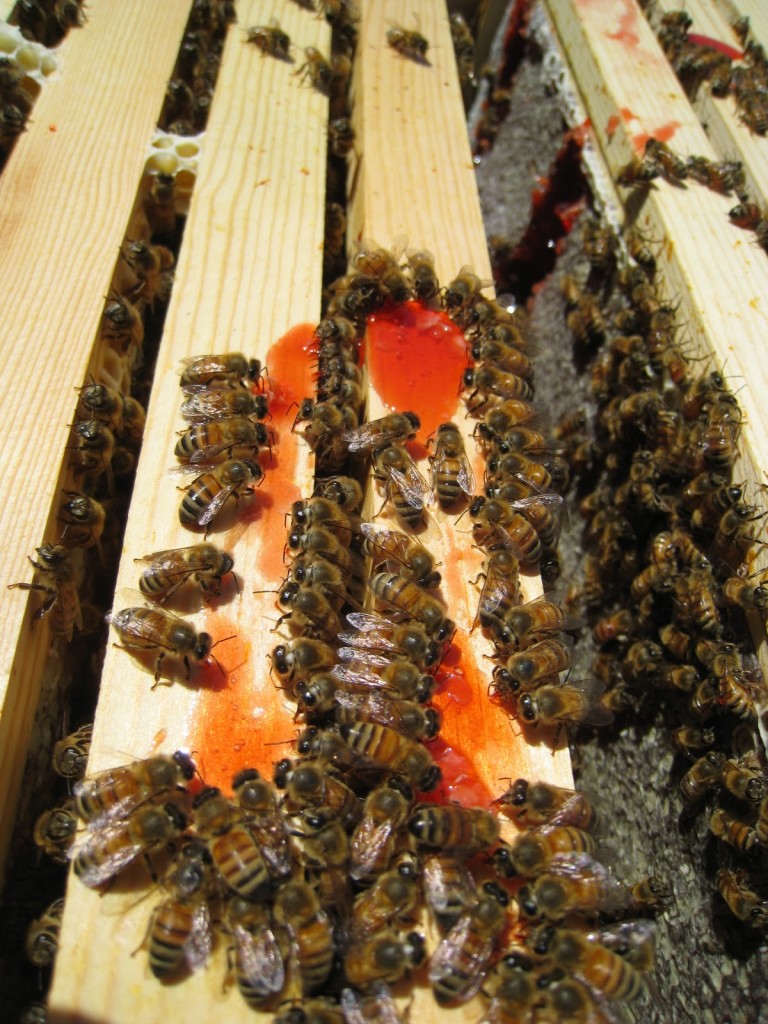Amateur beekeeper Gita Nandan began to suspect something wasn’t right about mid-summer. That’s when her bees’ honey, normally amber, turned the color of cherry cough syrup. After a day of foraging, her bees would return to their Brooklyn hives, their distended bellies glowing bright red.
She posted photos on the Facebook page of the New York City Beekeepers Association hoping someone would be able to come up with an explanation. One person suggested that the bees had been supping off hummingbird feeders. Another said they might have ingested antifreeze.The honey looked awful, and it didn’t taste right either. On his blog, Borough Bees, beekeeper Tim O’Neal described it this way: “It was overly sweet, maybe even saccharine, and it had a bit of a metallic aftertaste that didn’t do it any favours. In a word, gross. Not something I’d put on my biscuits.”
Beekepers talk. And it quickly became evident that it wasn’t just Nandan’s hives that had been affected. Brooklyn beekeeper David Selig’s hives had gone crimson too. He had an alternate theory, however. What if, he proposed, the bees had found their way into the local maraschino cherry factory? The sticky red syrup filling the bees’ bellies could be dyed corn syrup.
The hypothesis was convincing. The hue was right. And Selig’s hives, which lay closest to the factory, were the brightest shade of red. O’Neal helped collect honey samples from several of the hives to send to a lab for analysis. “The positive result for Red Dye #40 was just the final bit of proof,” he says. Apparently bees are no nobler than man when it comes to making food choices.
My first instinct is to lament over how we’ve corrupted the noble bee by carelessly leaving our junk food laying around. But nature is immune to this sort of corruption. In the wild there is no right and wrong. There is only survival. Every living thing is driven by the same inexorable instinct to endure. The equation is simple: High fructose corn syrup = food = perseverance.
Of course, humans have learned the hard way that some foods are better than others. What effect this corn syrup binge might have on Brooklyn’s bees is not yet clear. Commercial beekeepers sometimes feed bees high fructose corn syrup to supplement their foraging. But recent research suggests that the sweet stuff may play a role in colony collapse disorder.
**
Image credit: Tim O’Neal of BoroughBees.com
The red bee mystery has received a lot of media attention since this story appeared in the New York Times.

2 thoughts on “Sticky Business”
Comments are closed.